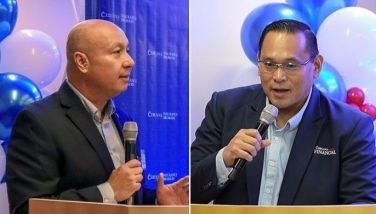Nescafe converts waste into energy
The Nestle Cagayan de Oro Factory’s Atmospheric Fluidized Bed Boiler (AFBB) is a state-of-the-art technology that recycles and burns 100 percent spent coffee grounds of bunker fuel a day, which the factory uses for its operations. Spent coffee grounds are the remains of ground roasted coffee after their liquor has been extracted.
“Because less oil are burned to generate steam, the AFBB greatly helps reduce environmental pollution and save energy costs,” says Ed Legasto, Senior Vice President of Nestle Philippines, Inc (NPI) and factory manager of the Cagayan de Oro factory.
He furthers that by using biomass as a substitute for bunker fuel, “we prevent the adverse air emission pollution such as Sulfur Dioxide (Sox) and Nitrogen Oxide (NOx), which is a natural by-product of combustion of fossil fuels.”
“And with the installation of a very efficient pollution control device called the Electrostatic Precipitator (EP), the whole AFBB system complies with Clean Air Act or RA 8749,” Legasto says.
The process of recycling spent coffee grounds begins after the green coffee beans are roasted. The ground-roasted coffee is extracted with hot water inside the percolation batteries or extraction cells to produce the coffee extract.
While the coffee extract undergoes spray-drying to produce Nestle’s best-selling coffee, the spent coffee grounds are sent to the disposal system to be used as fuel. The heat produced from this process is then used to produce the steam requirements of the Cagayan de Oro Factory.
Legasto says that the AFBB is not the first environment-friendly technology that Nestle has utilized.
“As early as 1994, the factory had been using the concept of biomass disposal using the Lurgi Waste Heat Boiler System,” reveals Legasto. “It uses coffee grounds, by-products after extracting coffee liquor from roasted coffee beans, as a fuel to generate steam.”
He adds that the AFBB has a higher capacity that can handle not only solid biomass from coffee processes but also colored water concentrate.
Nestle has also implemented programs designed to create environmental awareness.
For example, its Cagayan de Oro Factory launched a Solid Waster Management Program designed to establish proper garbage segregation and disposal in Purok 11 of Barangay Tablon, where the factory is located.
The program involves the creation of a communal eco garden and eco-center, selling of recyclable materials from segregated household wastes, and the manufacture of organic fertilizers from the biodegradable wastes. Community residents are oriented about the program and are involved in the community clean-up drive.
- Latest






























